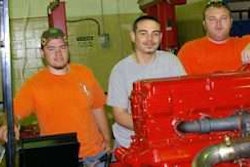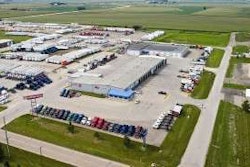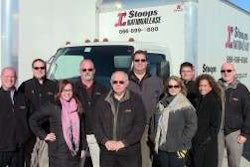Peanut butter and jelly. Starksy and Hutch. Parts and service. Without one, the other just isn’t the same and in some cases, is irreparably harmed.
If the parts department doesn’t manage its inventory well, the service department will lose efficiency completing repairs, thus driving business away. If technicians are dumping old, greasy parts on the back counter in search of quick replacements, the parts department staff may find itself strained, harried and more prone to error.
But before you have a parts and service anatomy to discuss, dealerships first need to staff both departments.
Staffing shortages are an industrywide plague, and though everyone has his own pet anecdotal story about finding the best service writer or the best technician, there are some common denominators.
Age is definitely one such commonality. The experts Successful Dealer consulted agreed that the baby boomer workforce is being eclipsed by technologically-savvy twentysomethings, creating a different learning curve in the dealership.
Portland, Ore.-based TEC Equipment holds 11 Mack and Volvo dealerships, predominately on the west coast. The company employs about 600 people, so successful search and retention techniques are prized.
“We’re always looking at where our next generation workforce is coming from and that’s really critical. How are we going to staff the next generation?” Dave Thompson, owner/president, TEC Equipment.
TEC Equipment has tackled the question of attracting quality staff by looking in non-traditional places.
“We’re saying that this job is like working a main counter. You could be at a NAPA parts store or a Nordstrom’s department store-you’re just not dressed as nicely,” Thompson says.
In increasingly metropolitan markets, it is not sufficient to search for employees through word of mouth, or to rely on staff regeneration through the progeny of current workers.
“We go after young people,” said Thompson. “We look at the industrial arts departments or the vocational departments of high schools.”
Tapping into this fountain of youth and integrating ages has proved itself to be a successful strategy for TEC Equipment, in both parts and service.
Most of our experts also agreed that when making hiring decisions, it’s not always best to rule out potential parts or service employees based on level of technical know-how or experience in a bay.
Mark Martincic, service and body shop consulting director, KEA Advisors, said that it’s best to hire people for “attitude, personality, interpersonal skills, ability, experience then training, in that order. This is even more important for those positions that interface with customers.”
“A lot of managers say that they would rather have somebody who knows how to deal with people than who knows the business,” said Keith Ely, managing partner, KEA Advisors.
“And yet when it comes down to it, they typically hire somebody who knows the business rather than has a personality. I guess in a perfect world, you would hire someone who communicated well, both in writing and verbally, and who has decent mathematical skills. Then you’d spend two years teaching him about how a truck works and what goes on in the business. But in reality, you often don’t have that time.”
EXTRA: Keeping your staff aligned; tackling troublesome turnover
Parts and service communication is a notoriously frustrating knot in dealerships. A good first step toward untangling the lines of communication is to hire naturally good communicators and then encourage constant inter- and intra-departmental dialogue, both through innovative dealership technology and solid, old-fashioned human interaction.
Part bottlenecks are a constant source of tension between the parts and service departments. When technicians have to stand in long lines at the back parts counter, their productivity impeded, or when the parts department is swamped with demanding technicians dumping greasy parts on their counter in addition to helping a string of front counter customers, tension builds and job satisfaction plummets.
Some experts Successful Dealer consulted had concrete ideas about how to streamline the parts flow between these two critical departments.
Before smoothing ripples between parts and service, get the right people in the right positions. For example, traditionally, the service writer needs to be able to ask discerning questions of a driver, but doesn’t necessarily need to know how to solve the problem itself.
A technician, on the other hand, has to be up to date on all the advances in truck technology, including keeping abreast of regulatory changes. And you wouldn’t hire a highly-skilled and highly-paid technician to perform only oil changes.
But don’t rely on old job descriptions when hiring; instead anticipate the position changes brought to the surface by advancing technology, or shifts in the industry.
The experts we spoke with all singled out the service manager as a position that must be filled by a multi-faceted employee. “I think a service manager now, compared to 10 years ago, needs to understand and has to be able to relate to customers while understanding the financial side of the business and what makes it tick,” Ely says. “And in inventory, you have to have someone who understands the business’ philosophy behind stocking parts and exactly where money is going.”
“The service manager has to be both right-brained and left-brained,” Thompson says. “He has to be mechanically driven on one side and just as importantly, he’s got to understand how to drive revenue. A service manager in today’s environment has to be able to sit down with his technicians, keep them productive, maintain a training regimen and keep shop morale up with one hand, and with the other hand he has to drive sales. It’s very difficult.”
Another difficult task is finding the right balance of duties. For example, service advisors shouldn’t just be watching their technicians work.
“If you’re going to have a support staff, the important thing is that these people need to generate revenue and it does not mean that they’re turning a wrench, but instead means that they’re finding things to sell and helping technicians increase their efficiency,” Ely says.
Ely also cautioned against promoting people without thoroughly evaluating their strengths and weaknesses. “We all have been guilty of promoting the best technician or the best parts guy up to the next step. And maybe he was very good at his technical job, but when it came to running the business side of the department, he fell on his face.”
Thompson agrees. “You can hire people for one job level, but they’re not necessarily good at the next.
“There are parts of the business that I don’t like doing or that I’m not good at. I’ve hired the best people that I could to do those jobs. Don’t second guess people; don’t micromanage. Let them go out and do their jobs,” he said.
Once you have the right people in the right positions, the physical layout of the shop can have a strong effect on interdepartmental communication. A small physical move can happily affect staff morale and efficiency.
“I’ll give you an example of where we’re headed with one dealership,” Ely says. “We’re taking the guy at the back counter and we’re moving him out into a kiosk on the shop floor. There are 14 technicians working during the day and there are three or four PC terminals in the shop for technicians to use. The only way that they’ll be able to get parts is to place their parts orders through the computer.
“The order will go through the parts man who is out in the shop and will print from his printer. It won’t tell him the part number-he’ll still have to look that up. But what we found through visiting with the staff is that for 80% of the parts ordered, the back counter guy doesn’t need any help looking up the part. He’ll fill the order and send a pick ticket into the parts inventory warehouse.
“The service manager loved the idea because his techs didn’t have to leave their stalls. The parts guys loved it because they don’t have a bunch of technicians crowding the window. The reason for moving the parts guy into the shop is that because we’ve removed him from pulling parts, he spends time actually walking the floor, asking questions of the technicians, like, ‘you’re putting a water pump on-did you remember to ask for the thermostat?'”
Thompson also uses specified placement of technology to ease communication between the parts and service departments. “The way our computers are set up means that the minute the repair order is opened at the counter, an account for that return number is opened in the parts department. No one manually runs anything down anymore. The minute the part is ordered, it gets charged right to that repair order number.
“Communication about moving parts between parts and service is all electronic,” said Thompson.
But for all the ease of communication technology brings to the dealership, there is no replacement for face-to-face communication when it comes to troubleshooting and building good rapport between parts and service department staff.
“I think the most important thing we’ve found is that constant communication about the impact the parts department has on the service department and vice versa, goes a long way. Forcing them to sit down and visit with one another is key to demonstrating how neither department is an island onto itself,” Ely says.
Another point all our experts made is that it’s vital to remain consistent, both when enforcing positive staff communication and when setting incentives.
There is some debate about whether or not it’s helpful to tie together the incentives of the parts and service department heads. According to Martincic, it’s vital to set “clear, specific job descriptions, accountability and consistent processes, but above all, have clear, consistent communications.”
Ely agrees. “The majority of pay should be incentive-based and the majority of the incentives have to be based on something that person can control. Nothing is more frustrating than not being able to control what your incentive is based on.”
Ely believes that crossing incentives between the parts and service departments generally is a good plan. “I think you have to be careful how you do it,” he cautioned. “A front counter parts person is not going to have control over what the service department does and a technician can do nothing to help the gross profit percentage of the parts department. They can sell more parts and impact the gross profit dollar, but not the percentage. He’s not going to price the parts,” Ely says.
If you do decide to link department incentives, take a careful look at exactly where parts and service overlap financially and guard against imbalances.
If you have a powerhouse of a service department and an anemic parts department, it may be a good idea to structure incentives in order to force the parts department to stand on its own and gain strength, otherwise resentment may fester and an unhappy staff deflates profit.
“Most service and parts departments take on the manager’s personality, so it’s critical that these two managers have significant elements of their pay plans tied to both departments,” Martincic said.
The anatomy of the parts and service department staff is more than skin deep. It is not enough to assign people to specific posts and let them sit; staffing and compensation should be a dynamic, ongoing process.
Take frequent stock of where people are and what they are thinking and pay close attention to their complaints. Don’t lose sight of the big picture while examining the specifics.
You can develop a satisfied, productive, communicable staff by listening carefully while examining what your numbers tell you-and always maintain a good bedside manner.
This article was republished from our archives.










